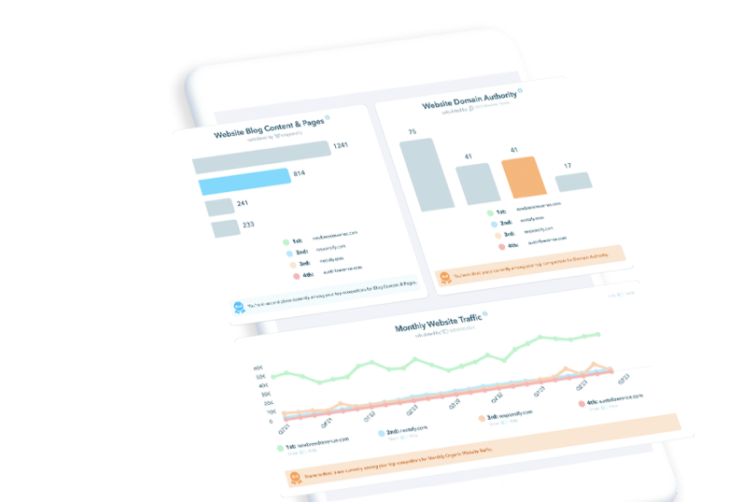 2407 Views
2407 Views  6 min read
6 min readWhen you work in the healthcare marketplace, you understand how long the sales process can be. Prospecting, outreach, then some more outreach, closing, then repeating, over and over. One of the best ways to fuel this long sales pipeline is by building a steady flow of qualified leads and managing a CRM efficiently. Remember, it’s not about the number of leads you have, it’s about the quality you have. Because those quality leads are the ones that will convert into a sale and become a reoccurring customer.
Selling a product can be difficult even if the product is wonderful. In today’s saturated market, it’s important to take the time and think about your buyer’s journey toward purchasing your product. What do they have to go through in order to find you, let alone decide if you are the right fit for them. Generally, consumers like to research before purchasing a product, no matter if it’s B2C or B2B.
What does this mean? It means that the consumer is putting effort to find a solution in order to solve a problem they might be facing.
Let’s take a deeper look at the three stages your buyer encounters.
Buyer stages affect your sales pipeline and should be aligned with your ideal Buyers Journey. Below, are the three stages that matter most for your Healthcare Software sales pipeline.
These stages are here to help you understand what your buyer is going through before they sign the dotted line. This technique falls under Inbound marketing techniques that closely tight with sales.
Always keep the buyers’ journey in mind when you are working on your sales pipeline. It’s very important to understand what they are going through and how you can help. Let’s take a look at the phases of your pipeline.
You want to establish your specific goals for each stage of your sales pipeline. This will keep your sales team motivated and enhance the chances of success, drastically.
For instance, If your goal was to close around 120 large healthcare software sales deals in a year, realistically this will translate to fewer deals but it all depends on the quality of leads you have! Not the quantity. Aim high, but understand you might not reach that goal… yet. You want to gather as many quality leads as possible and close the deals effectively and efficiently. The way to achieve this is by getting everyone on the same page with your company goals.
After defining the stages of your pipeline and establishing your goals, create a sales dashboard which will help track your progress, along with your prospects as well. The dashboard should be updated on a daily basis with important information regarding your sales pipeline. At a glance, you should be able to know where you are and what your next course of action is.
You can build a dashboard using a spreadsheet or sophisticated CRM software like Hubspot. The dashboard should help you monitor details such as:
According to the sales guru Colleen Francis, many salespeople find themselves caught in the ‘sales trap‘. This is a situation where a lot of effort is put into making sales and little or no effort in generating prospects. With time, this results in a dry pipeline. To avoid this, you need to have a discipline of filling your pipeline continually.
Here are a handful of ways to keep a steady pipeline of quality leads:
As you send proposals and close deals, take time to find new contacts to fill the top of the funnel. This should be a daily routine to ensure that your pipeline is always flowing. Figure out how many prospects you need in the Engage stage in order to meet your sales targets.
The good news is that there are sales management software out there that can help you monitor the movement of your prospects in the sales pipeline.
This is a necessary step in your healthcare software pipeline that is often overlooked. If a potential customer becomes unresponsive (which they will be – it happens) or remains at the same stage of your healthcare software sales pipeline for too long, it is time for you to reevaluate them and their relevance to your own goals.
Now that you have your sales pipeline down, you will plan better next time in making a more accurate sales forecast. Cleaning up your pipeline also involves ensuring that your data is up to date. Many people change companies, jump ship, or just retire, so it’s imperative to know what is happening with your leads.
Building a steady healthcare software sales pipeline is a challenge even for the best salesman. This is why it is very important to understand who your prospects are and what they stand for, what their wants, needs, and pains are. You want to create a strong pipeline to create the best buyer journey experience. This process is a larger body of marketing and sales strategies called the Inbound Marketing Methodology. This methodology will help you understand both sides, and assess the best leads for your business.
It can be very challenging to do all of this alone. Generally, companies will hire a team of writers, marketers, editors, and more. At Responsify, we partner with health technology sales and business development pros to offer strategy, support, and help to build an inbound leads pipeline. By collaborating together, we help marketing and sales strategically attract new website visitors, convert them to qualified leads and turn them into happy customers. Remember, it’s not about the number of leads you pull in, it’s the amount of quality leads you gather.
If you are looking to learn more about your Healthcare Software Sales Pipeline and capitalize on your marketplace, reserve your spot for a 1-on-1 strategy session today!
